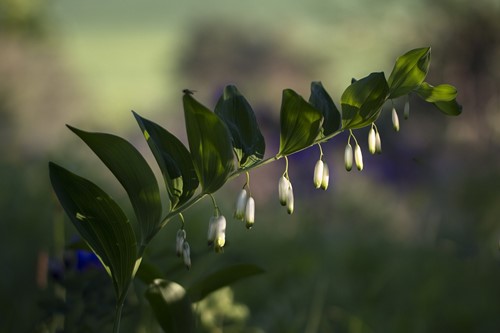Email: [email protected]

Solomon's seal is a North American native plant popular in shady gardens. The elegant stems and small flowers spread out to cover the ground to create a lush, woodland setting in any yard. If you're interested in growing Solomon's seal in your own garden, here are some essential care tips to know:
Solomon's seal plants natural environment is the shade or dappled sunlight beneath large trees. The ideal place to plant them in your own garden should have partial to full shade. However, if you live in a cooler climate, the plant can tolerate more sun throughout the year. In warmer regions, Solomon's seal are best kept entirely shaded.
Solomon's seal prefers evenly moist soil. However, it's important for the soil to drain rather than become soggy. You'll want to regularly water young plants until they get fully established, but mature plants are more forgiving of brief periods of dryness. If you live in a particularly dry region, drip irrigation can be helpful for keeping this plant happy even in the shade.
While the many species of Solomon's seal grow across a wide range of hardiness zones, they prefer cool temperatures and moderate humidity. This plant will thrive in temperate, shady gardens shielded from dry winds and hot sun. Using mulch around the plants is a great way to regulate the soil temperature and keep the roots cool in warmer weather. Mulch will also aid in insulating the roots during the winter when the plant goes dormant.
Luckily, the Solomon's seal plant doesn't require regular maintenance beyond watering. The flowers are all small and will drop off by themselves when they wilt, meaning no need for deadheading. You won't need to trim back or prune any foliage unless it manages to overgrow its allotted space. However, it's a moderately slow grower, so you may not encounter this issue for many years. You will be able to enjoy the beautiful foliage until the plant dies back after the first frost.